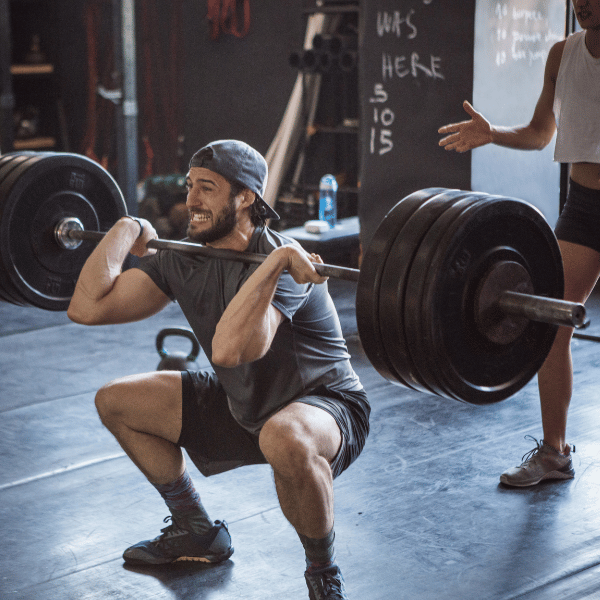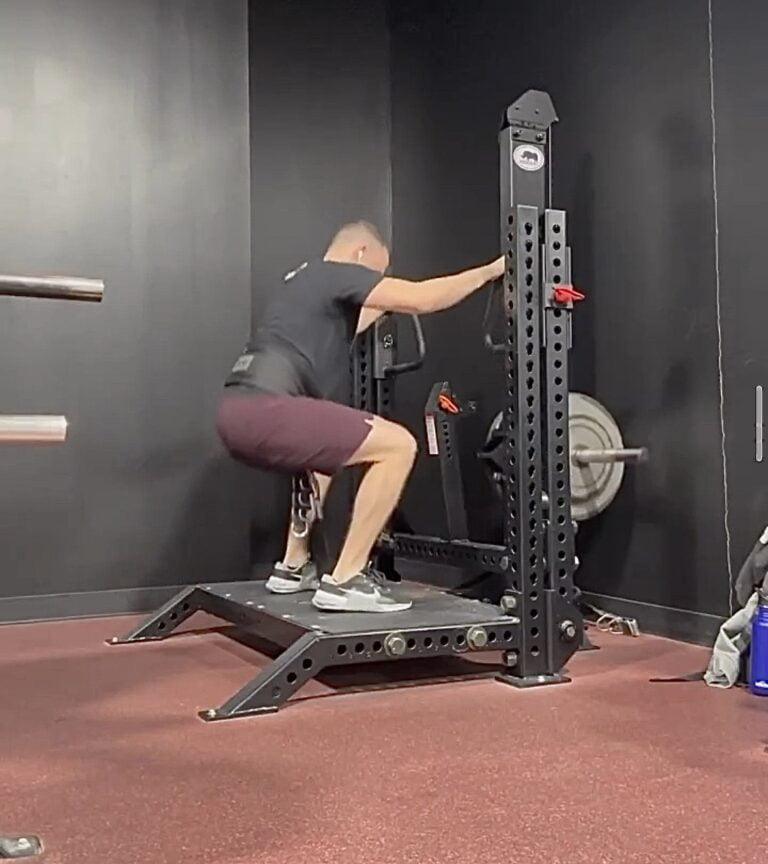The 20 Best Physical Therapy Exercises For Posture
If you are anything like me, you spent your younger years being told by your parents and other people to stand up straight. Poor posture was considered undesirable and should be avoided at all costs.
Now, fast-forward to my thirties, and after spending time as a Strength and Conditioning Coach and a Physical Therapist, I can look back and say that I am in the camp of maintaining proper posture, standing up straight, and avoiding slouching.
Although slouching is a common problem, maintaining good posture can help prevent a host of negative consequences and painful conditions such as lower back pain. (1)
I will explain these in a bit, but it also begs the question: What exactly is good posture? Is there a good reason for avoiding poor posture?
The reality is that there are many different postures besides the “Egor” esq slouched position you may have in your mind right now. Someone can have nine different types of posture.
This article will reveal my top 20 physical therapy exercises for posture. As well as review the various postures of the human body, the important joints and muscles involved, and how you can design an effective exercise program to include in your daily routine to optimize your posture.
What Are The 20 Best Physical Therapy Exercises For Posture?
Some basic and simple exercises to address impairments in the involved shoulder joints and can lead to better posture by providing a great stretch to the muscle groups involved are listed below:
Mobility Exercises
Thoracic Spine:
Shoulder Blades:
Shoulder Joint:
Important Muscles Related To Good Posture
Next up is building muscle strength using various posture exercises to maintain good posture easily. The muscles that you should be most concerned with for achieving a neutral posture are the muscles of the upper back, Rotator Cuff, deep neck muscles, and, of course, the abdominal muscles to build core strength.
The upper back muscles include the mid- and Low Trapezius muscles, the Rhomboids, The Erector Spinae, the Levator Scapulae, and the latissimus dorsi.
The main focus for the actual shoulder muscles is improving the strength of the four Rotator Cuff and scapular stabilizers. (2)
There are many neck muscles, but when it comes to improving posture, we are primarily concerned with strengthening the deep cervical flexor muscles. Such as the Longus Colli and the Longus Capitis.
Some great posture exercises for the muscles above are listed below:
Strengthening Exercises
These exercises can strengthen the postural muscles and help you improve your posture. Design your exercise program based on your specific needs.
Upper Back:
Rotator Cuff:
Deep Neck Flexors:
Abdominal Muscles:
The Nine Different Human Postures
- Neutral Posture: This is what you would typically think of and assume when you want to hold yourself in a “good” posture.
- Kyphosis: this is what is typically viewed as a “bad” posture. It is characterized as having a rounded upper back. It is usually a result of muscle imbalances between the muscles in the front of the body and the back muscles.
- Lordosis: This posture exhibits an excessive inward rounding of the low back, which can make the glute protrude excessively.
- Forward Head Posture: As the name implies, this is a posture where the head protrudes forward, mostly from excessive downward gazing, such as with prolonged texting or desk work. With this posture, there is an imbalance between the muscles on the front and back of your neck.
- Rounded Shoulders: Again, as the name implies, this is when the shoulders round forward and is typically caused by muscle weakness and imbalances between the internal and external rotators of the shoulder.
- Swayback Posture is the opposite of lordosis, with an excessive “outward” curve or reduced lordosis in the lower back, typically caused by muscle imbalances and habits.
- Military Posture: This posture, at first glance, may be seen as desirable, but because the shoulders become so retracted, it can cause muscle imbalances and long-term fatigue.
- Forward Pelvic Tilt: This is caused when the hip muscles become imbalanced with weak core muscles and tilt the pelvis forward.
- Flat Back Posture: As the name implies, this posture results in a flattened lower back, which is also caused by muscle imbalances and spinal abnormalities.
As you can see, there are a variety of different postures someone can have. But when you think about having a” good” posture, we are striving for both a Neutral Posture and a changing posture. There is evidence to support that poor posture is not an issue, but the prolonged time in that posture causes issues.
You can also look at that list and think of people you know or maybe even yourself who have a combination of poor postures. In my experience in physical therapy and fitness, I have seen that most people have Kyphosis, rounded shoulders, and forward head posture.
For the remainder of this post, this is the posture I will refer to when I mention “poor posture.”
Think about what the average person does daily. They typically sit at their desk with their shoulders forward and looking down at their screen.
Plus, if you couple that with frequent texting where, again, the head is down and shoulders roll forward, you are almost guaranteed to be fighting a losing battle when it comes to avoiding poor posture habits.
So why is having poor posture even a bad thing? Who cares if your back is rounded, your head is forward, and your shoulders rotate inward?
Well, for people who train regularly, poor posture, such as increased Kyphosis, forward head posture, and interiorly rotated shoulders, can significantly alter the mechanics of the shoulder when you try to press anything over your head.
If the upper back is stuck in a flexed position, the scapula, shoulder, and neck joints cannot access their full range of motion.
How To Assess Your Posture
As an experiment, sit up in your chair right now and purposely round your back. Try rotating your head from side to side or lifting your arms above your head. I am willing to bet you were not able to move as much as you were before rounding your back.
This happens as we perform movements like overhead pressing, horizontal pressing, or pulling variations. Then, in turn, you have to compensate and will ultimately develop an overuse injury down the road, leading to neck pain, shoulder pain, and even lower back pain as you extend through the lower back when you lift overhead.
As you may have seen in the posture list, muscle imbalances are almost always involved in bad posture.
The good news is that exercise is the most powerful way to combat poor posture and prevent the inevitable compensations in the gym that are caused by it. By addressing muscle imbalances, strengthening weak muscles, or loosening tight muscles or joints, you can avoid injury in the gym and improve your performance.
However, there is a framework that outlines an order of importance for what should be addressed first.
This is the same framework I use as a Physical Therapist to help my clients in their exercise program to relieve pain and improve their fitness in my 1:1 Pain-Free Performance Program.
Before working on posture correction with various strengthening and physical therapy exercises, you must first achieve normal joint mobility, which relates to good posture.
If you go straight to strength training the posture muscles without addressing the mobility of the joints, you may have some success, but you may also just build strength on top of dysfunction.
Important Joints Related To Good Posture
The first joint I examine to correct posture is the Thoracic spine. The thoracic spine is the upper back portion of your spine and is responsible for Kyphosis posture when it gets stuck in a slouched position. If the thoracic spine does not move well, the shoulder joint won’t either. (3)
Next is the scapula, or shoulder blades. Suppose the scapula can’t retract back towards the spine during pulling exercises and away from the spine when pressing exercises. In that case, the shoulder stands no chance of staying free.
Lastly is the actual shoulder joint. Once you can achieve a neutral thoracic spine position and a mobile scapula, you are cleared to work on your actual shoulder mobility.
Wrapping Up On Physical Therapy Exercises For Posture
By incorporating these Physical Therapy exercises into your workouts and consistent effort, you can, over time, correct imbalances in your upper body and begin to correct your poor posture.
The critical thing to know is that you are designed to get into a “Bad Posture” occasionally, where the spine’s position isn’t ideal, and there isn’t one good posture. That’s why the human skeleton has so many joints and muscles that you can move out of a neutral spine.
But by ensuring that the muscles around the joints are strong and that perfect posture isn’t assumed for prolonged periods, you can prevent bad postures from becoming a habit.
If you enjoy training, incorporating these types of Physical Therapy exercises is the best way to correct postural dysfunction. From an injury prevention standpoint, most overuse injuries result from forces on joints and tendons that they are not designed for.
This is often a result of poor mechanics somewhere in the kinetic chain. If you can improve your posture during upper body exercises, you will be in a better position to stay pain-free and improve your performance.
But I understand that constructing a training plan that considers all these things is difficult. You have other things to worry about, and that is where a professional like myself comes in.
If you would like to learn how to incorporate these exercises into a workout plan, I invite you to book a free consultation so that I can learn more about you, your goals, and how I can help you reach them.
You can click HERE for a personalized treatment plan.
References:
- In, T. S., Jung, J. H., Jung, K. S., & Cho, H. Y. (2021). Spinal and Pelvic Alignment of Sitting Posture Associated with Smartphone Use in Adolescents with Low Back Pain. International journal of environmental research and public health, 18(16), 8369. https://doi.org/10.3390/ijerph18168369
- Escamilla, R. F., Yamashiro, K., Paulos, L., & Andrews, J. R. (2009). Shoulder muscle activity and function in common shoulder rehabilitation exercises. Sports medicine (Auckland, N.Z.), 39(8), 663–685. https://doi.org/10.2165/00007256-200939080-00004
- Barrett, E., O’Keeffe, M., O’Sullivan, K., Lewis, J., & McCreesh, K. (2016). Is thoracic spine posture associated with shoulder pain, range of motion and function? A systematic review. Manual therapy, 26, 38–46. https://doi.org/10.1016/j.math.2016.07.008







